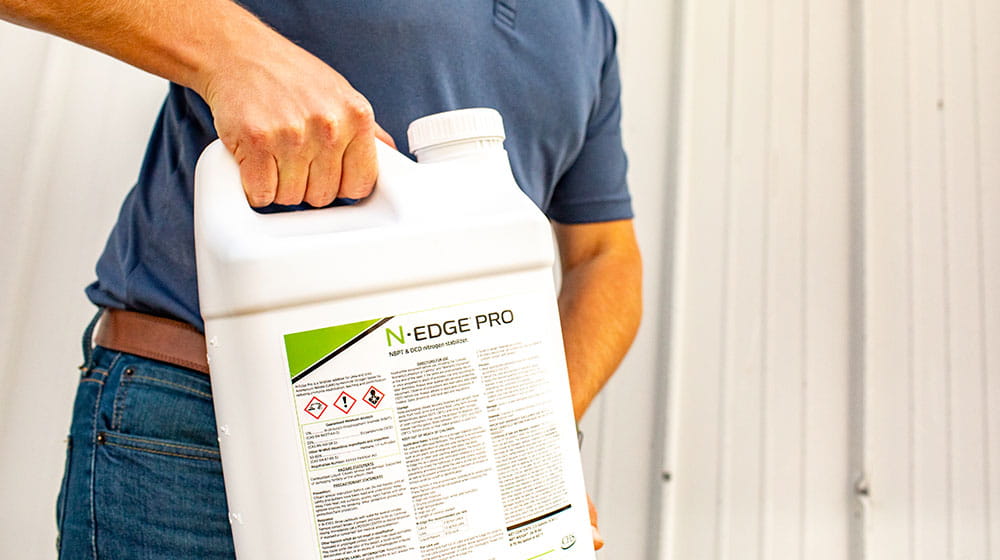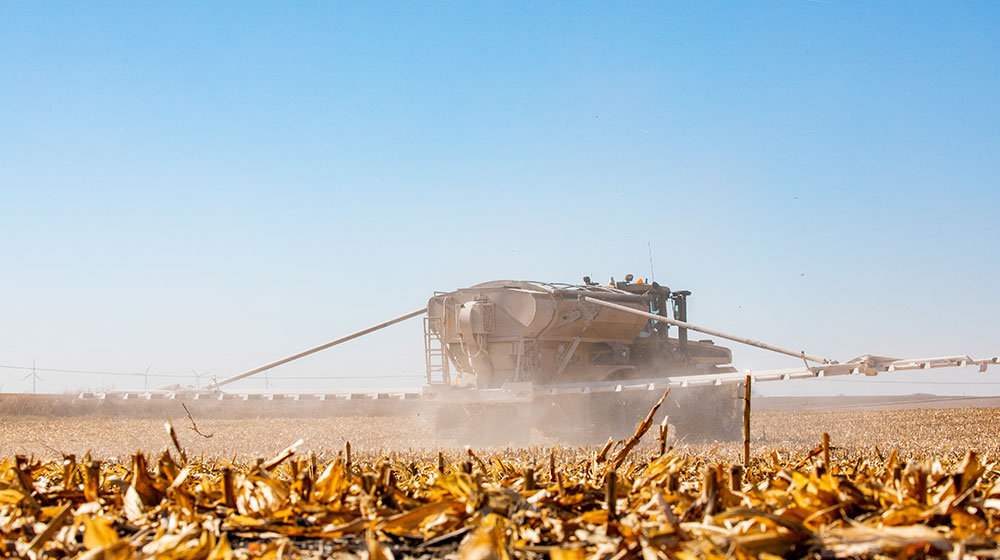Fall fertilizer applications are underway for the 2026 crop as harvest enters the homestretch. With low commodity prices and high input costs squeezing profitability, CHS agronomy experts urge growers to take a strategic approach to nutrient management.
Kurt Lahr, a regional product specialist with CHS, says it’s more important than ever for farmers to plan, protect and optimize their nutrient investments.
“Farmers need to make smart, calculated decisions,” says Lahr, who works with sales agronomists in southern Minnesota and South Dakota. The ratio between commodity and fertilizer prices is unbalanced. And in some areas, yields were less than expected.
“Phosphorus and potash spreading is underway, and nitrogen applications will begin when soil temperatures consistently dip below 50 degrees. But, right now it’s hard for some farmers to do that due to the ag economy,” he continues. “They’re putting a lot of thought into it.”
Tim Swanson, a regional product specialist with CHS covering northern Minnesota and North Dakota, says farmers are looking for solutions to help them succeed both agronomically and economically.
“In a down market, growers often aim to increase production to improve profit potential,” he says. “We have a lot of tools to help them accomplish their goals.”
Here’s five ways growers get the biggest bang for their fertilizer buck.

Cooperative agronomists can help farmers develop crop nutrient plans to meet production and economic goals.
1. Make a plan
CHS agronomy experts encourage farmers to meet with their local cooperative agronomists – if they haven’t already – to develop a fertility plan.
“Harvest may be ahead of schedule, but we’re behind on planning,” Lahr says. “Many farmers didn’t want to make a 2026 fertility plan until they had a better idea about the 2025 crop. In this economic environment, it’s crucial to meet with a trusted advisor who knows your farm and has your best interest in mind to make the best nutrient decisions.”
2. Test your soil
Soil sampling is a key component of nutrient planning, helping growers establish a baseline for fertility needs. Whether using grid or zone sampling, these tests deliver essential insights for informed decision-making.
“Understanding the nutrient removal rate of the previous crop is critical,” Lahr says. “Most farmers recognize that it’s not the time to build soil fertility, but cutting back too much can hurt. Skimping on nutrients can lead to significant yield losses – and rebuilding fertility levels afterward is expensive.”
Growers use soil test results to guide variable-rate fertilizer applications, leading to more efficient nutrient use, improved soil health, and stronger yield and profit potential.
“Soil testing, especially when paired with precision technology, is a smart investment,” adds Swanson. “It helps farmers make better decisions and get the most out of every acre.”
3. Remember the 4Rs
Adopting the 4Rs of fertilizer – right source, right rate, right place and right time – can help maximize crop and profit potential.
“Following the 4Rs right now is so important to make sure you are not overapplying or underapplying nutrients to maximize yields. That’s the only way crops can pencil out,” Lahr says.
Cooperative agronomists routinely discuss the importance of the 4Rs with growers, says Ryan Hageman, a technical specialist manager with CHS covering South Dakota, Minnesota and Nebraska. “That affects their bottom line. Farmers want to maximize their production by effectively utilizing the nutrients needed to grow their crops efficiently.”
4. Consider enhanced efficiency fertilizers
Enhanced efficiency fertilizers can make a difference in return on fertilizer value, according to CHS nutrient experts.
Two options from CHS are Trivar® and Trivar® EZ, each containing the Levesol® chelating agent that makes phosphorus and other key micronutrients more readily available to plants. Trivar is impregnated on dry fertilizer and includes zinc, boron and nitrogen. Trivar EZ is an easy-to-use granular blend that includes calcium, manganese, sulfur, zinc and molybdenum.
“Phosphorus is notoriously one of the least efficient nutrients, and right now it’s one of the more expensive inputs,” Lahr says. “These products help make the most out of nutrient investments.”
A new product available is Velora™, a biological crop residue digester specifically designed to degrade crop stover, increase planting efficiency and release nutrients found in crop residue. Farmers can directly apply it in fields or include in an herbicide tank mix for fall burndown.
“Releasing nutrients tied up in stover faster helps farmers achieve their goals,” Swanson says.

N Edge® Pro is a nitrogen stabilizer that provides protection against volatility, leaching and denitrification in both below- and above-ground applications.
5. Protect nitrogen
Nitrogen is prone to loss through nitrification, denitrification, volatilization and leaching. Minimizing loss by using a stabilizer, such as N Edge® products from CHS, ensures that more fertilizer is available for plant uptake and growth.
“Farmers need to make sure that nitrogen is there during the critical times of the growing season when plants need it the most, such as at tassel for corn,” Hageman says. “We have a lot of research showing yield optimization is reached if nitrogen is there when plants need it.”
Slow-release nitrogen products can also reduce nutrient loss and promote plant growth. Two options are N-Ertia® B and N-Ertia™ 26 from CHS. The products contain a low salt, highly efficient source of nitrogen that is intended to improve nitrogen use efficiency while increasing crop yields.




